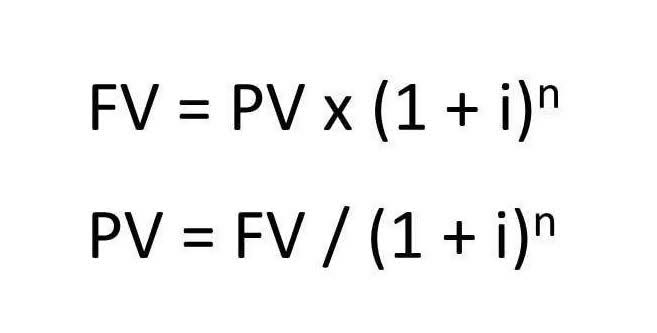Notes Payable Learn How to Book NP on a Balance Sheet

This increases efficiency, lowers administrative costs, and minimizes errors, which can have ripple effects on the organization’s financial stability. Accounts payable allow businesses to procure essential goods and services without immediate cash outlay. By leveraging trade credit, companies can prioritize cash flow for day-to-day operational needs while ensuring uninterrupted delivery of resources critical for production or service delivery.
Similarities Between Accounts Payable and Trade Payable
After matching the supplier’s invoice with its purchase order and receiving records, the company will record the amount owed in Accounts Payable. For most companies, if the note will be due within one year, the borrower will classify the note payable as a current liability. If the note is due after one year, the note payable will be reported as a long-term or noncurrent liability. This article looks at meaning of and differences between two legs of the payment cycle in a customer’s books – bills payable and accounts payable. Notes receivable is a financial instrument that entitles the holder to receive a specified sum of money, from the drawer at terms specified therein.
Facilitates long-term financial planning
Your financial statements contain a wealth of information that helps you get the lay of the land, plan ahead, and forecast the future. They outline how your cash will be allocated so that you can accomplish your financial goals. These two types of debt are Retail Accounting very similar, but there are important differences. When you pay the first quarterly interest expense, you’ll make the following entry, which should be paid at the end of the quarter. For example, in May, you take out a loan for $20,000 from a local bank to help fund your business.
What is the main difference between Accounts Payable and Trade Payable?
It differs from a loan contract in that payments are usually paid monthly rather than in installments. In addition, notes payable do not contain clauses for recourse actions in the event of default. A higher ratio is preferred because it shows the company is generating enough cash flow to cover its debt obligations, which indicates strong cash flow management and the ability to service debt. Ideally, companies aim for a ratio of 0.2 or higher, but this can vary depending on the industry and the company’s specific financial strategy.
Recording processes

The AP team makes sure suppliers are set up right, invoices check out against POs and receipts, and payments go out on a schedule that keeps cash flow healthy. They also keep an eye on working capital to pay on time without affecting what is the difference between notes payable and accounts payable the company’s liquidity. Trade transactions in commercial entities, especially those of high volume and high value, often take place on credit basis.
- Define clear due dates – Standardize terms such as Net 30 or Net 60 to align with the company’s financial cycles.
- Anyone who looks at the balance in the accounts payable category will see the total amount that the business owes all of its vendors and short-term lenders.
- Accounts payable and notes payable are both financial obligations, but they differ in structure, repayment terms, and impact on financial health.
- For accounts payable, a company receives goods or services and owes money to suppliers for them, usually based on the invoice terms.
- Once full payment is made, the account is removed from the accounts receivable.
- At their core, accounts payable and notes payable are obligations a business owes to external parties.
For accounts payable, a company receives goods or services and owes money to suppliers for them, usually based on the invoice terms. Managing Cash FlowKeeping track of outstanding payables helps businesses allocate cash wisely and avoid liquidity issues. They measure this with Days Payable Outstanding (DPO) — the average time it takes a business to pay its invoices.

- By anticipating revenue dips, organizations can avoid piling up invoices during slower periods, all while maintaining good supplier relationships.
- A common question in accounting is whether notes payable is part of accounts receivable or a related category.
- Grasping how each works can help you make smarter decisions, manage cash flow better, and keep your accounting in order.
- Notes receivable represent a formal, written promise that a customer or another party will pay your business a specified amount of money by a certain date.
- Accounts payable (AP) refers to a business’s short-term financial obligations to its suppliers, vendors, or service providers for goods or services acquired on credit.
Paying back these loans to banks or other financial institutions also helps build good credit, and unearned revenue notes payable overall allow businesses more time and room for strategic future planning. It is notes payable if there is a written agreement or promissory note that outlines a specific amount to be paid on a specific date, usually with interest. Automate Dispute Resolution with AP SoftwareInvoice discrepancies and errors are one of the primary causes of delayed payments. To mitigate this issue, many businesses turn to AP automation software, which quickly catches mismatches between purchase orders, invoices, and receipts. Automating a three-way matching process eliminates the need for time-consuming manual checks, reduces human errors, and speeds up the resolution of disputes.
Automation Can Simplify Both Accounts Payable and Notes Payable

Your vendors will be more sympathetic to your payment situation than lenders. Reach out preemptively if you’re concerned about a payment being late and see if they’ll be willing to extend. Missing due dates incurs unnecessary interest and late fees that eat into your margins. Put due dates in your calendar with reminders days in advance so you aren’t blindsided by any payments.

Forrester Recognizes HighRadius in The AR Invoice Automation Landscape Report, Q1 2023
Bonds and notes both appear on the liabilities side of a company’s balance sheet, and the interest paid on each appears as an interest expense on the income statement. It is important to realize that the discount on a note payable account is a balance sheet contra liability account, as it is netted off against the note payable account to show the net liability. However, it is possible to convert an accounts payable expense to notes payable if necessary.

